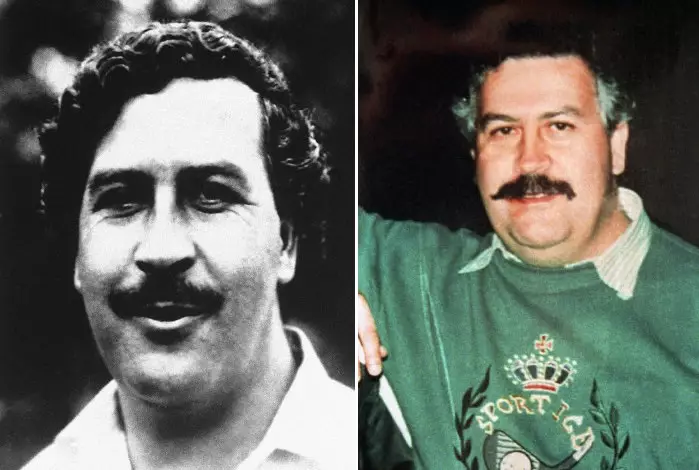
'The King of Cocaine', Pablo Emilio Escobar Gaviria, is widely regarded as the richest criminal who ever lived. Incredibly, his reported net worth was $30 billion in the early 1990s. That's probably why Netflix are releasing a second season of Narcos, due to hit our screens tonight. Bearing in mind that Airbnb is worth $30 billion today - it kind of puts into perspective just how rich this guy was. Who says crime doesn't pay?!
His staggering wealth brought him worldwide fame and notoriety. He managed to balance his crime with a 'Robin Hood' kind of image as the poorer people of Medellín, Colombia, loved and respected him.
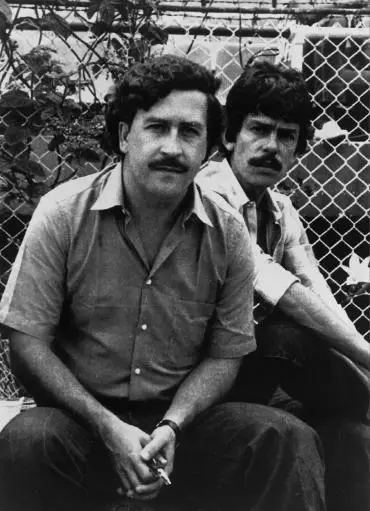
But why? Well, he was credited with building many football fields and multi-sports facilities as well as the construction of hospitals, schools and churches in western Colombia.
It was these kind of gestures that gained him immense popularity within the Roman Catholic Church and helped solidify his relationship with the local community. In fact, many of them would act as lookouts and scouts along his drug trafficking routes in order to hold information from the authorities and protect Escobar as best they could. He would also literally give his cash away to people in the local community and would use large portions of it to build thousands of homes for those who needed them most.
As a result of these actions, you'd be forgiven for thinking that he was a kind-hearted man. But Escobar was not the kind of person you'd want to get on the wrong side of.
Colombia quickly became the world's murder capital with around 25,000 violent deaths in 1991. This increased murder rate was fuelled by Escobar giving money to his hitmen as a reward for killing police officers, with more than 600 members of the force dying in this way. After the assassination of presidential candidate Luis Carlos Galán in 1991, the Colombian government moved against Escobar and the Medellín Cartel.
Credit: Netflix
But let's start at the beginning.
Escobar was born on December 1st, 1949 in Rionegro, which is a relatively small city around an hour away from Medellín, where he would later settle and build his multi-billion dollar drug empire. Escobar was no stranger to crime as a youngster, either. He was regularly involved in many petty street scams, selling fake lottery tickets and contraband cigarettes as well as stealing cars. In the early 1970s he made an easy $100,000 by playing a pivotal role in the kidnapping of a highly respected member of Medellín's community. However, his next step on the criminal ladder was when he became a millionaire working for contraband smuggler Alvaro Prieto, bringing fake electronics and household items into Colombia from overseas.
At this time, Escobar was already very well known and respected by many people in Colombia, particularly in Medellín. He bribed many police officers and court officials in order for them to turn a blind eye to his contraband importation. Then came the cocaine.
Beginning in the early-to-mid 1970s, large amounts of coca paste were purchased in Bolivia and Peru, processed, and taken to the United States as the famous white powder that's still available today. Under Escobar's leadership, six other illegal entrepreneurs from the Medellín area collaborated to form the infamous Medellín Cartel. At the height of its power, the Medellín Cartel was smuggling 15 tonnes (around 13,600kg) of cocaine per day, worth more than half a billion dollars, into the United States.
According to Roberto Escobar, Pablo's brother and accountant, he and Pablo spent $1,000 per week purchasing rubber bands to wrap the stacks of cash they were earning and they stored most of it in their warehouses.
Ten percent of this cash had to be written off per year due to 'spoilage' by rats that crept in at night and nibbled on the $100 bills. Escobar's reputation grew in 1975 when a well-known Medellín dealer named Fabio Restrepo was murdered under direct orders from Escobar. He had previously purchased 14kg of cocaine from Restrepo and, after he was killed, all of Restrepo's men were informed they were working for Escobar.
In May 1976, Escobar and several of his men were arrested and found in possession of 18kg of white paste after returning to Medellín with a heavy load from Ecuador. Initially, Escobar tried unsuccessfully to bribe the Medellín judges who were forming the case against him. Instead, after many months of legal wrangling, Pablo had the two arresting officers bribed and the case was dropped. This began Escobar's pattern of dealing with the authorities by either bribing them or killing them, which he called 'plata o plomo', which literally translated as 'silver or lead' to mean 'take the money we are offering you or face bullets'.
Escobar then journeyed to Peru where he bought cocaine paste directly from the plant it was made at in the middle of the jungle. On his first trip, Pablo bought a mere 30 pounds (around 13.6kg) worth of paste in what was to become the first step towards the building of his empire. At first, he smuggled the cocaine in old plane tires and a pilot could earn as much as £500,000 per flight depending on how much he could smuggle. The paste was then refined and made into powder in a laboratory in a two-story house in Medellín.
In the late 1970s, Escobar took his cocaine operation to the next level. One of his trusted traffickers, Carlos Lehder, purchased an island in the Bahamas known as 'Norman's Cay'. The island included a 3,300 foot airstrip, a harbour, hotel, houses, boats, aircraft and even a refrigerated warehouse to store the cocaine. Before the island was ready to use, Escobar even flew a small plane himself between Colombia and Panama to smuggle vast loads of cocaine to the United States.
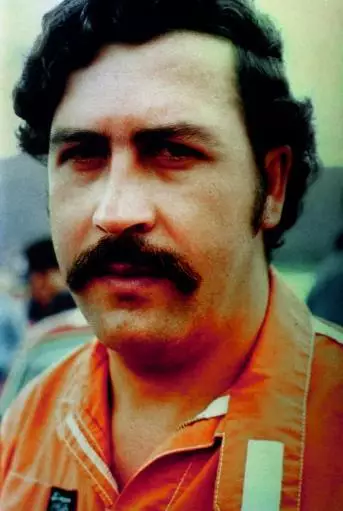
From 1978 to 1982, this was used as a central smuggling route for the Medellín Cartel. It was at this point that Escobar was making enough money to move away from Medellín. He purchased a 7.7 square mile estate in Puerto Triunfo, Antioquia - around 200 miles north-west of Bogotá - called Hacienda Nápoles. It included a Spanish colonial house and a complete zoo that played host to many kinds of animals from different continents, such as giraffes, ostriches, elephants, hippopotamuses, horses, antelope and exotic birds. The ranch had a large collection of old and luxurious cars and bikes, a private airport, a bull fighting ring and even a kart racing track. His operation was now so big that Escobar needed more vehicles and manpower to meet the demands of drug dealers around the world, so he purchased 15 new, bigger planes and six helicopters. After these purchases, Escobar decommissioned the small plane which he had once used to fly the return trip from Colombia to Panama and he had it placed above the entrance to his ranch at Hacienda Nápoles.
At one point, it was estimated that 70-80 tonnes (70,000-80,000kg) of cocaine were being shipped from Colombia to the U.S. every month. At the peak of his power in the mid-1980s, Escobar was shipping as much as 11 tonnes (11,000kg) per flight in jetliners to the United States. The biggest single load shipped by Escobar was 23,000kg that had been mixed with fish paste and shipped via boat, as confirmed by his brother in the book Escobar. In addition to using the planes, Escobar also used two small, manned submarines to transport the massive loads undetected.
During the height of its operations, the Medellín Cartel brought in more than $60 million per day. Escobar once said that the essence of the cocaine business was 'simple'. He said: "You bribe someone here, you bribe someone there and you pay a friendly banker to help you bring the money back."
In 1989, Forbes estimated Escobar to be one of 227 billionaires in the world with a personal net worth of close to $3 billion dollars due to the fact his Medellín Cartel controlled 80 percent of the global cocaine market. An avid sports fan, it is commonly believed that Escobar was the principal financier behind Medellín's Atlético Nacional, who won South America's most prestigious football tournament, the Copa Libertadores, in 1989.
Although Escobar was an enemy of the U.S. and Colombian governments, he was adored by many in the poorer communities of his home nation. As previously mentioned, he built many amenities for the poor. The Colombian cartels' continuing struggles to maintain supremacy resulted in Colombia quickly becoming the world's murder capital. After much negotiation, Escobar agreed to cease all criminal activity and surrender to the authorities on the conditions he could build and live in his own private prison, known as La Catedral, and serve a five-year term. Many people believed La Catedral was built to keep other people out, rather than keeping Escobar in. The Colombian government agreed that, if Escobar served his full term, he would not be extradited to the U.S. to face charges for drug trafficking and multiple murders.
The finished prison was often referred to as 'Hotel Escobar' or 'Club Medellín' due to its vast list of amenities. La Catedral featured a full-size football pitch, a giant doll's house, a bar, jacuzzi and a waterfall. Escobar also had a telescope installed that allowed him to look down onto the city of Medellín to his daughter's residence while talking on the phone with her.
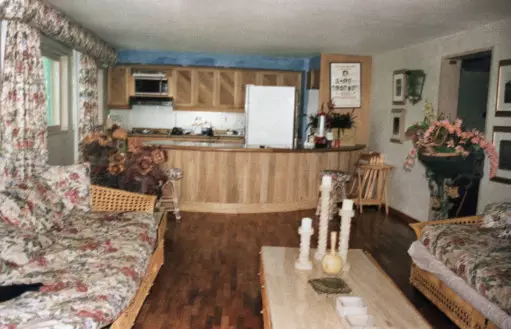
La Caterdral
Unsurprisingly, it was soon discovered that Escobar was continuing his criminal activities from within La Catedral.
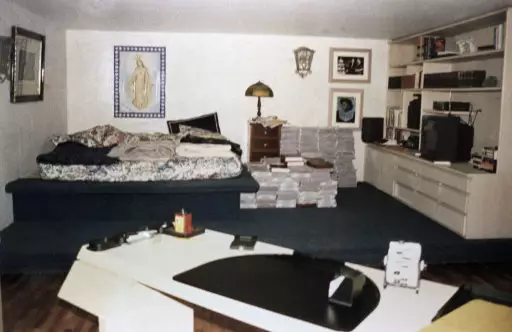
La Caterdral
The Colombian government attempted to move Escobar to a more conventional jail on July 22nd, 1992, but Escobar's influence over the local community allowed him to discover the plan in advance and make a well-timed escape with very little fuss. Escobar was now effectively on the run.
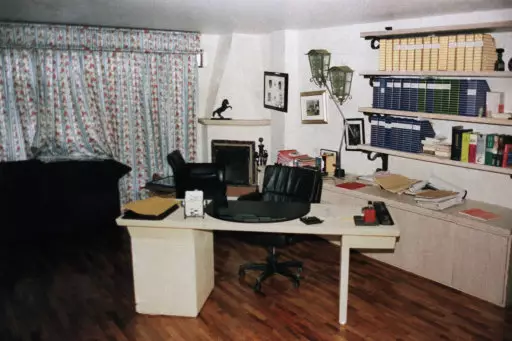
La Caterdral
The United States joined the hunt for Escobar later that year. Their Joint Special Operations Command, consisting of members of the US Navy SEALs and Delta Force, travelled to Colombia to build an elite task force, known as Search Bloc, who were tasked to capture and kill Escobar at the earliest opportunity. A short time after Search Bloc was formed, the conflict between Escobar and the United States and Colombian governments took a turn, meaning the drug kingpin now had more enemies than ever. A vigilante group known as Los Pepes, which stands for Los Perseguidos por Pablo Escobar - 'People Persecuted by Pablo Escobar', was financed by his rivals and former associates, including the Cali Cartel, which is the Medellín Cartel's biggest rival. Los Pepes were involved in a large amount of vengeful killings during this time, with more than 300 of Escobar's associates and relatives were slain and vast amounts of the Medellín Cartel's property was destroyed.
Escobar was eventually killed on December 2nd, 1993 during a firefight with Search Bloc. Using radio triangulation technology, a Colombian electronic surveillance team found him hiding in a small house in Medellín. With authorities closing in, a gunfight ensued between Search Bloc and Escobar and his body guard, Alvaro de Jesús Agudelo, who was known locally as 'El Limón'. The two fugitives attempted to escape by running across the roofs of adjoining houses to reach a back street, but both were shot and killed by Colombian National Police. Escobar suffered gunshots to the leg, torso and the fatal one in his ear. It has never been proven who actually fired the final shot into his head, or determined whether this shot was made during the gunfight or as part of a possible execution. There is wide speculation about the subject. Escobar's brothers, Roberto Escobar and Fernando Sánchez Arellano, believe that he shot himself through the ear.
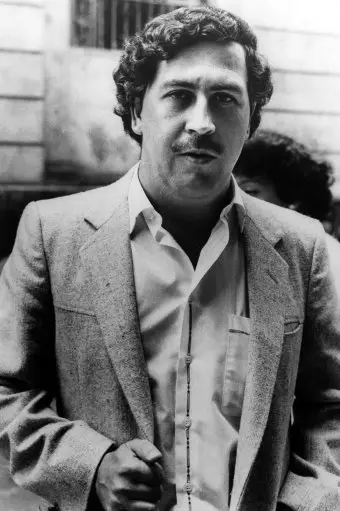
All Image Credits: PA images
Roberto said: "He committed suicide, he did not get killed. During all the years they went after him, he would say to me every day that if he was really cornered without a way out, he would shoot himself through the ear."
The Robin Hood image Escobar had worked hard to maintain continued to have a lasting influence in Medellín. Many there, especially the city's poor who had been aided by him while he was alive, mourned his death. About 25,000 were present for his burial.
Thus concludes the crazy life of Pablo Escobar. Fuck.
Featured image credit: PA images
Featured Image Credit:Topics: Pablo Escobar, Cocaine, Netflix, Narcos